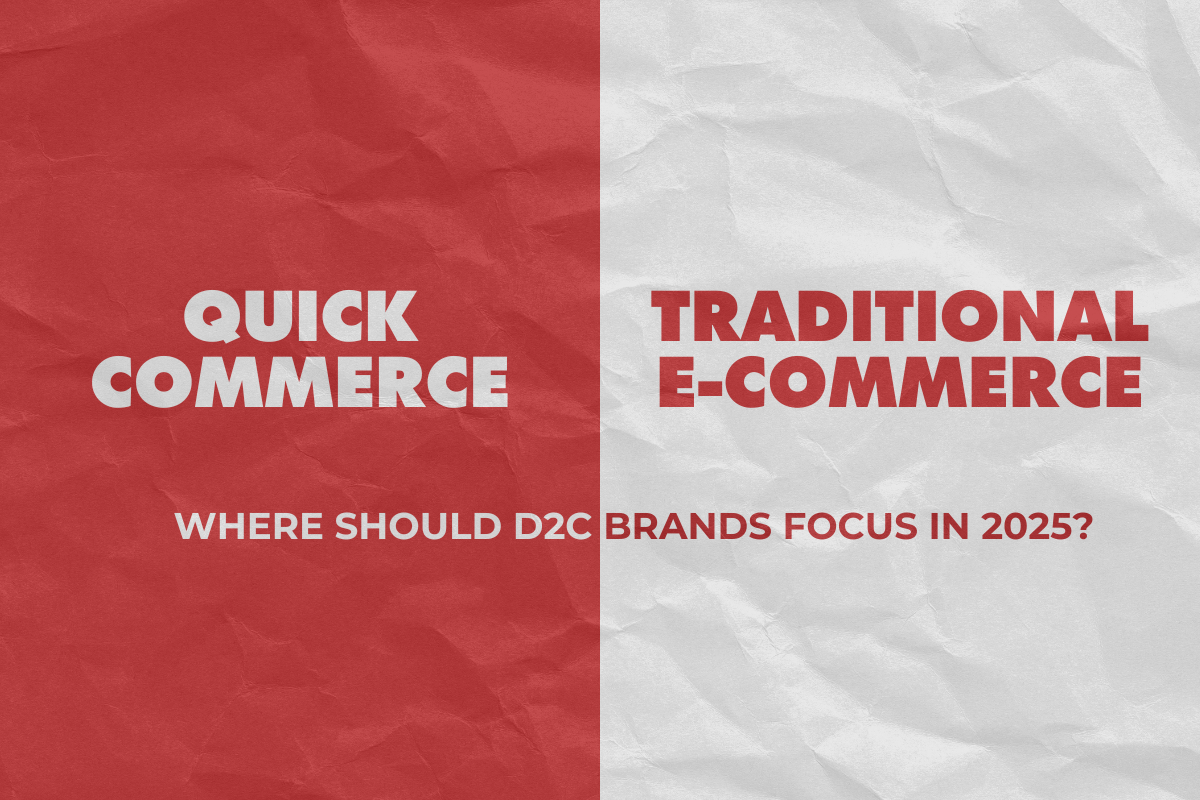In today’s rapidly evolving digital retail landscape of Quick Commerce vs Traditional E-commerce:D2C brands face a pivotal choice: Should they invest in Quick Commerce or stick to E-commerce as we’ve known it? This is no longer a minor strategic debate—it’s a decision that can define brand growth, customer loyalty, and operational scalability in 2025. As consumer expectations tilt toward convenience, speed, and personalization, brands must assess where their resources yield the highest return.
In this blog, we dive deep into the core differences between Quick Commerce and traditional E-commerce, the strengths and trade-offs of each model, and how D2C brands can align their marketing and operations accordingly. We’ll also look at how the right partner—like a trusted ecommerce marketplace marketing agency or quick-commerce marketing company—can influence your success.
Understanding the Models: Quick Commerce vs E-commerce
Both models serve the same end goal—delivering goods to consumers—but differ drastically in speed, infrastructure, and marketing approach.
- Quick Commerce promises delivery within 10 to 30 minutes, usually catering to hyperlocal demands such as groceries, personal care, or daily essentials.
- E-commerce, on the other hand, offers a wider product range with delivery timelines of 1–5 days, powered by robust logistics, payment gateways, and listings on major marketplaces.
Each model attracts a different type of consumer. Quick Commerce services marketing agencies target impulse buyers and last-minute needs, whereas ecommerce marketing companies focus on detailed product discovery, comparison, and brand storytelling. The approach to amazon listing services or flipkart listing services also changes depending on which model you choose to prioritize.
Cost, Infrastructure, and Speed: What D2C Brands Should Weigh
After understanding the delivery models, brands need to evaluate cost structures and operational setups.
- Quick Commerce requires micro-warehousing, tighter delivery radiuses, and real-time inventory management. It’s a capital-intensive but high-reward model for fast-moving goods.
- E-commerce allows for centralized inventory and wider geographic reach, making it suitable for high-involvement or non-urgent purchases.
Partnering with the right quick-commerce services marketing agency can help brands understand local buying behaviors and map out their distribution. In contrast, ecommerce marketing services provided by an amazon marketing agency help drive long-term growth through marketplace optimization and performance marketing strategies.
Consumer Behavior in 2025: What’s Changing?
Digital-first consumers in India and across the globe are shifting behavior in key ways that D2C brands must recognize:
- Hyper-personalization: People expect brands to know their needs and serve them swiftly—this is where quick-commerce marketing services shine.
- Eco-consciousness: While speed matters, packaging waste and carbon footprints are now dealbreakers for a growing base of buyers.
- Omnichannel touchpoints: Consumers switch between apps, websites, marketplaces, and social media before making a purchase.
This behavioral shift is encouraging brands to adopt both models in a hybrid way. For instance, a health supplement brand might offer daily-use products through Quick Commerce while selling premium packages via E-commerce platforms with help from an ecommerce marketing agency. The role of an amazon advertising agency becomes crucial in creating persuasive campaigns that nudge buyers at every step.
Marketing Strategy: Listing, Advertising, and Conversion
Your marketing plan is the make-or-break factor, regardless of the model you pursue.
For E-commerce, the emphasis should be on:
- SEO-optimized product titles and descriptions via amazon product listing services
- Enhanced brand content (A+ content)
- Targeted ads run by a capable amazon ad agency
- Seasonal campaigns using ecommerce marketplace marketing services
For Quick Commerce, success depends on:
- Geo-targeted push notifications and real-time offers
- High-frequency visual content tailored to app formats
- Hyperlocal influencer marketing and neighborhood-based SEO
- Strategic support from a quick-commerce services marketing company
A specialized amazon marketing company or ecommerce marketplace marketing agency can help you bridge both needs, using analytics and automation to scale your brand across platforms.
Conclusion
As the D2C landscape diversifies, the best strategy might not be a binary choice between Quick Commerce and E-commerce, but a blend. A smart brand might use quick-commerce marketing services to dominate the daily-use category and lean on ecommerce marketing services to build long-term customer relationships.
To succeed, brands must align their goals with the right technology, marketplace presence, and marketing expertise. Whether you need optimized amazon listing services, a robust flipkart listing service, or a tailored quick-commerce services marketing strategy, your partner matters.
AKOI is a full-service digital growth partner for D2C brands. From streamlining your E-commerce marketplace presence to building hyper-localized campaigns for Quick Commerce, we help you meet customers where they are—and where they’re going next.
Let’s talk about what model works best for you in 2025—and how to win on both fronts.


